The following is an in-depth analysis of the game Yu-Gi-Oh! There are currently three card battling games based on the series on Nintendo Switch: Yu-Gi-Oh! Master Duel, Yu-Gi-Oh! Rush Duel: Legacy of the Duelist, and Yu-Gi-Oh! RUSH DUEL: Dawn of the Battle Royale!!. Below, we delve into the game, its rules, and insights into how it might benefit from some tweaks to the gameplay. This analysis applies to both the digital and physical versions of the game. Whether a longtime player or someone new to the franchise, this overview should provide some fresh insight into Yu-Gi-Oh and how it might benefit from some changes.
Breakdown of Game Rules
Yu-Gi-Oh! is a dueling card game where two players compete against one another with custom assembled decks. There are a few different kinds of cards in Yu-Gi-Oh, monsters (which can be used in combat), spells and traps (which can be used for a variety of effects), and extra deck monsters (monsters that have their own separate deck). There are three ways to win a match of Yu-Gi-Oh, including reducing your opponent’s life points from 8000 to 0 through either battle or effect damage, having your opponent be unable to draw cards from their deck, or through alternate win conditions such as the card “Exodia the Forbidden One,” which makes the player win the match if five specific cards are in the player’s hand. This is the basis of Yu-Gi-Oh, but due to decades of new cards and rules, things have become significantly more complex.
The Basics
Yu-Gi-Oh requires a deck to play, assembled by the aforementioned monsters, spells and traps. Each player starts with a main deck with somewhere between 40-60 cards. The player also has the option of having a 15 card (or less) extra deck, full of unique monsters that can serve as both utility and a powerful monster. There are groups of related cards which share parts of their name and cooperate with each other, named “archetypes.” An example of this would be the HERO archetype, full of superhero-themed monsters and spells that have a goal of creating tough monsters. Below is an image of a clay-themed monster, Elemental Hero Clayman. By fusing both Clayman and another card named Elemental Hero Bubbleman, players can make the stronger monster Elemental HERO Mudballman from their extra deck. Due to the long history of changes to Yu-Gi-Oh, I have created an image to show the game’s layout, which you can see below:
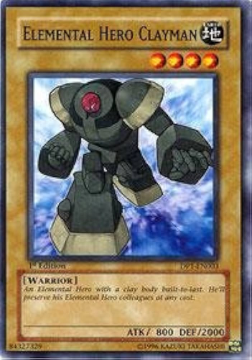
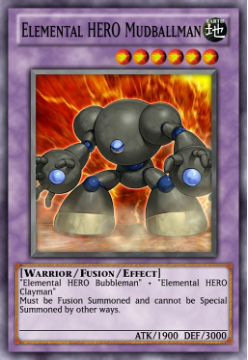
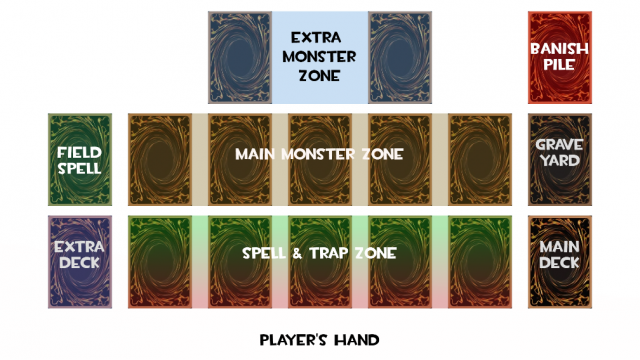
History of the Format
As mentioned previously, Yu-Gi-Oh is a very complex game. I have personally been recently looking into playing the game through the means of the video games Yu-Gi-Oh Master Duel and Tabletop Simulator. However, I understand that this can be a bit of an overwhelming topic to understand, so I will try my best to simplify things.
Currently, Yu-Gi-Oh struggles as a competitive game. Despite its long 25-year history as a card game, the strongest decks often end up being the newest ones. This is due to the concept of power creep, where cards printed further into the game’s life tend to be stronger as a means of making consumers have to spend money to properly compete. As a result of this arms race to being the best deck in Yu-Gi-Oh, the goal of beating your opponent has shifted into preventing your opponent from playing against you. Notably, focus has shifted away from the monsters on field and how to beat them, and instead on how to prevent them from coming out in the first place. At the same time, the game’s pace has quickened to the point where matches often end at around the 2nd or 3rd turn due to the power creep.
A card that serves as a great example of both the quickened pace of matches and preventative measures is a card named “Ash Blossom & Joyous Spring,” which can prevent your opponent from using an effect that adds a card from their deck to their hand, heavily neutering their options to prepare for your next turn. Due to this card being in a strange state of being a monster instead of a spell or trap, this card can be discarded from hand for its effect at any time without ever touching the field. This strategy only helped to fuel the arms race, as a viable goal in the game quickly became to remove cards from the opponent’s hand before they had the chance to counter. This creates a frustrating game for both players, and takes the focus away from the dueling monsters the game is known for.
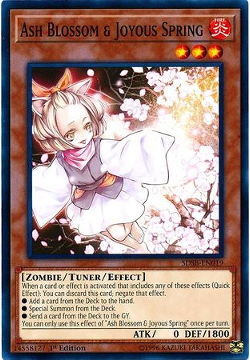
Changing the Loop
So, what is a solution to this problem? This power creep is so heavily baked into the game by this point, that removing it would mean removing a good amount of Yu-Gi-Oh’s history. However, a good chunk of the Yu-Gi-Oh community seems to have found a solid solution to this. As a simple means of reversing the heavy power creep, a community modification named Edison Format has grown in popularity, which limits playable cards to ones from 2010 and before. This succeeds in reversing the power creep while keeping the same game everyone enjoys. However, there are issues in its identity as a community format, which keeps its community fairly small. The lack of official support leads to difficulty with the format in cases where rules and cards have changed over time, which can make some online ways of playing Yu-Gi-Oh such as Master Duel not able to correctly play the format. Other formats do exist, but have less followers or surrounding events.
In terms of my ideas for improving the current state of Yu-Gi-Oh, I have a few ideas I think could help. Revising older cards could be a viable option to counter power creep, since by giving older cards new applicability, balance would be wider and allow for more options in terms of decks played. This is already somewhat done through “legacy support,” where Yu-Gi-Oh gives old archetypes new cards which can help give them more viability. While this helps, this can also lead to older cards within the archetype to lose viability within the set, continuing the process of newer cards getting more viability.
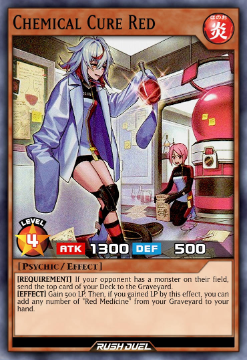
It could also be a fair idea to make older cards that are currently struggling have new rule changes surrounding them that allow the power to be spread equally (such as giving the ability to summon two monsters with no effects, while keeping the limit of one if a monster has an effect) This would be fundamental as a change, and would need to be monitored for both balance and its overall effect on the game.
Other ideas that come to mind are the recent Rush Duel cards, which are completely different formatted cards made for a separate mode of playing, like a spin-off. This helps the problem of power creep by giving an opportunity to revise older cards for a new game. However, Rush Duel not only lacks the legacy cards, but it is also a game with separate rules from the main game.
Finally, a decent idea is to use the universal ban list for the game to ban generic cards which give powerful strategies to all decks that may have them. While this may seem like an inviting solution that can limit power, it’s important to recognize that changes like this will affect both players. While this may limit a powerful deck able to utilize these tools, it can also harm a struggling deck in the same way.
Conclusion
Overall, Yu-Gi-Oh is a game dramatically shaped by its history, for better and for worse. While the game is fun and I have had plenty of fun playing the game on my own, the issue of its power creep has become more and more of a problem throughout time. I think that the game is due for a game-wide revision that evaluates the power creep with recent cards and addresses them in a meaningful way that returns the game’s overall focus away from preventing the opponent from playing. Revising old cards and giving them more support may be a viable way to help this, but I feel a major revision might have to go further beyond that. A new way of playing that has been emerging is varying formats which limit playable cards by what time they were printed, and I feel that making positive use of Yu-Gi-Oh’s rich history may be exactly what the card game needs. However, Konami should properly and officially support these formats as part of the game. I will probably continue to play Yu-Gi-Oh, but as my interest wanes with the game in its current state, I may have to try alternate formats and see how they fare instead.




 ShareThis
ShareThis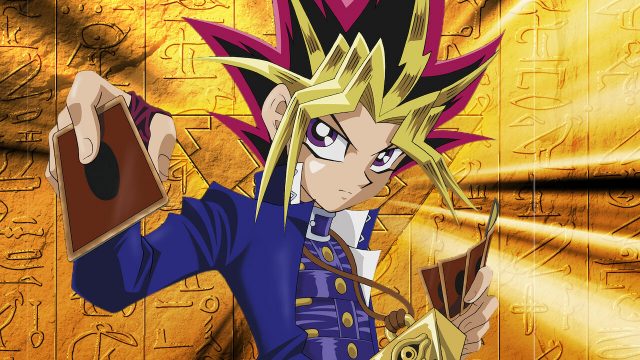







I didn’t know that Nintendojo talked about Yu-Gi-Oh!. But yeah, there have been some crazy cards that make other cards that are only a year old seem like trash. And some cards are just too good that they remain staples for the whole game. Yu-Gi-Oh has had problems like Dragon Rulers and many other tier 0 decks, so hopefully Konami can fix their mistakes later on for a balanced format.
That’s right Tyler, there have been plenty of Yu-Gi-Oh! games over the years on Nintendo consoles, so it’s something our readers are familiar with.